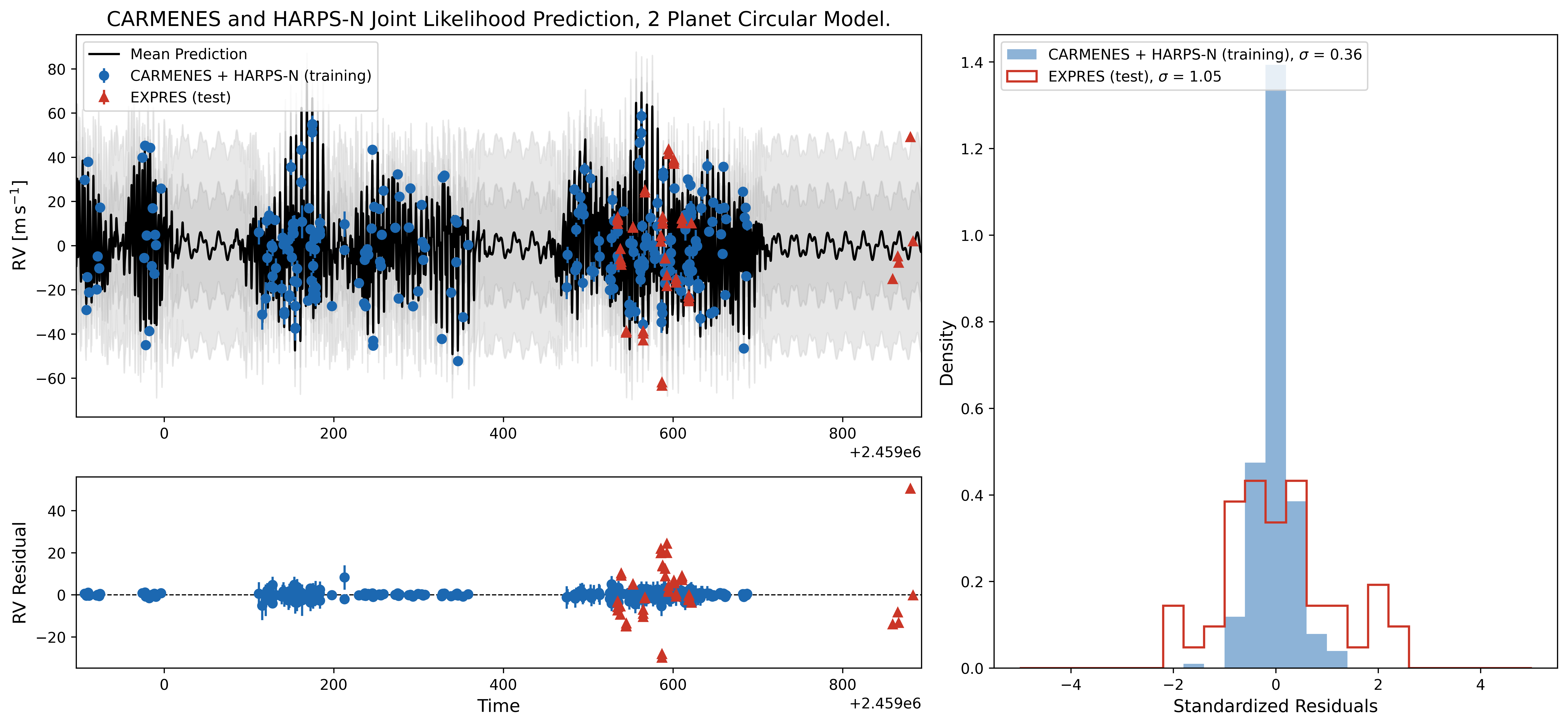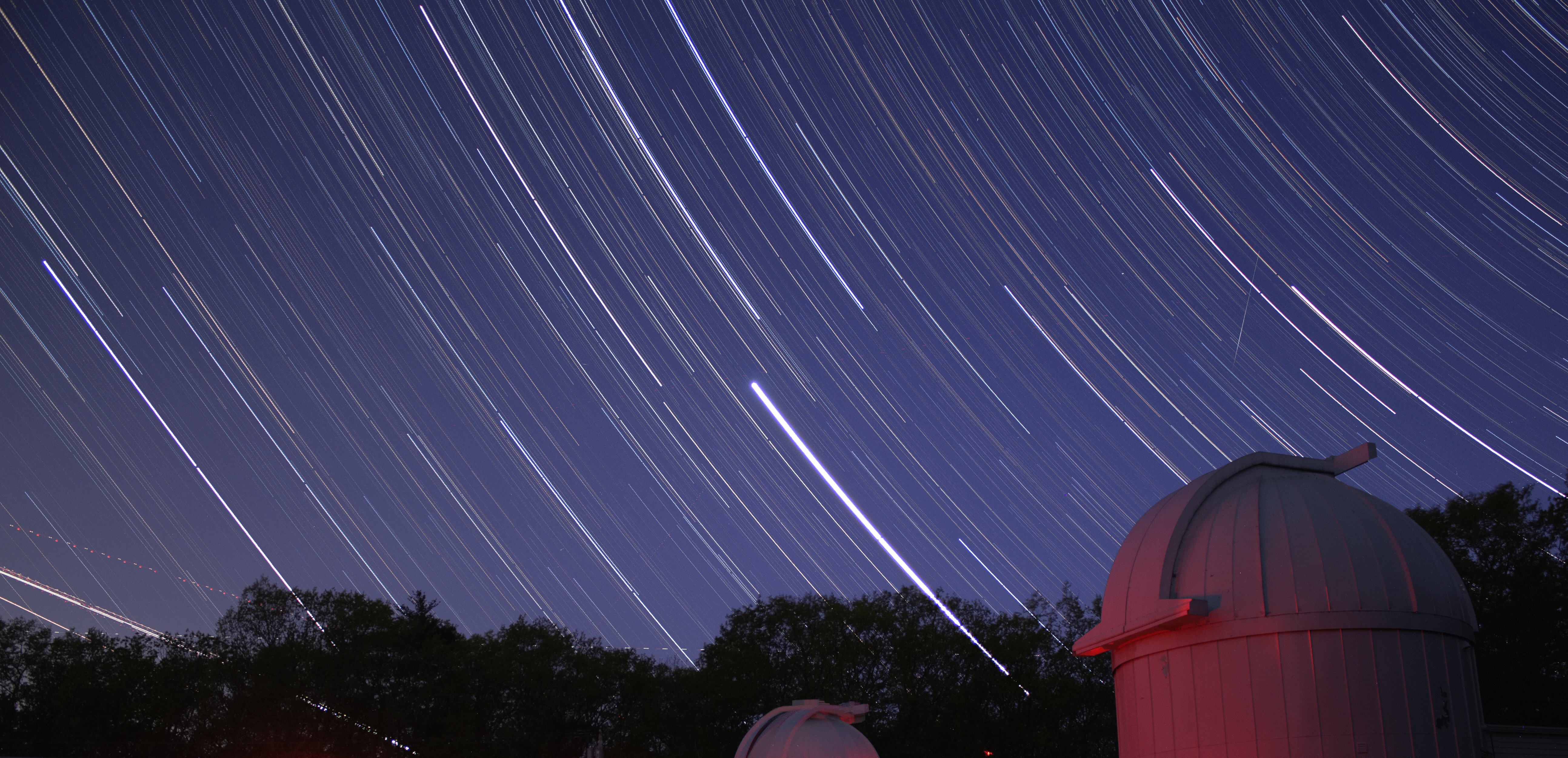Current Project: eurydice and the HD 63433 system

High stellar activity from young, active stars is a major obstacle when using the radial velocity method to detect exoplanets, limiting our ability to study young exoplanets’ properties and evolution. An increasingly common approach to modeling stellar noise in radial velocity measurements is Gaussian Process regression. However, there is no standardized method for assessing the predictiveness of these stellar activity models in the exoplanet community, a problem that has led to overfitting and unreliable results in the past (see Blunt et al. 2023). As the search for exoplanets begins to focus on younger and more active stars, it is becoming increasingly important to understand the extent of overfitting on stellar activity models.
eurydice is an open-source Python package produced to perform cross-validation on GP stellar activity models. eurydice functions through conditioning a given model on a subset of radial velocity measurements and examining how well the trained model predicts new unseen data.
With eurydice, I am building a new joint fit of planetary parameters for three exoplanets around the young star system HD 63433 and updating previous stellar activity models. As HD 63433 will be the first use case of eurydice, working with this star system will also provide valuable insight into the next stages of development for eurydice.
During my time working on eurydice, I’ve also had incredible opportunities to participate in Code/Astro in July 2024 and become a Lamat fellow in Summer 2025. These experiences were invaluable to my development as a growing astronomer, and I absolutely could not recommend them enough.
Past:
Photometry of VHS 1256-1257 and 2024 PT5 at Teide Observatory
 In January 2025, I traveled to Teide Observatory in Tenerife, Spain in partnership with the Instituto de Astrofísica de Canarias (IAC) as part of a three week intensive research class (read more about 12.411 Astronomy Field Camp via my interview with MIT Spectrum or with this IAC press release!).
In January 2025, I traveled to Teide Observatory in Tenerife, Spain in partnership with the Instituto de Astrofísica de Canarias (IAC) as part of a three week intensive research class (read more about 12.411 Astronomy Field Camp via my interview with MIT Spectrum or with this IAC press release!).
At Teide, I was trained to operate three different professional meter-class telescopes and from the data collected, I focused on characterizing the high variability of triple brown dwarf system VHS J1256-1257 and on determining a rotational period of “mini-moon” 2024 PT5.
Koronis Family Asteroids, Pluto, and TESS follow-up at Wallace Observatory
 During the summer of 2023, I worked at MIT’s Wallace Observatory on a handful of projects.
During the summer of 2023, I worked at MIT’s Wallace Observatory on a handful of projects.
My primary project was investigating Pluto’s atmosphere and surface using photometry as part of a several-year-long observing campaign. Through collecting data from Wallace throughout multiple summers, we are hoping to examine notable differences to Pluto’s light curves which can hint to changes in its surface or atmospheric makeup, particularly the migration of ices.
I also worked on collecting Koronis Family asteroid light curves to determine their spin vectors and shape. Two papers on 452 Hamiltonia and 5139 Rumoi were published in The Minor Planet Bulletin. I also helped develop and troubleshoot an automated observation program for TESS planet candidate follow-up with MIT’s Elliot 24-inch telescope.